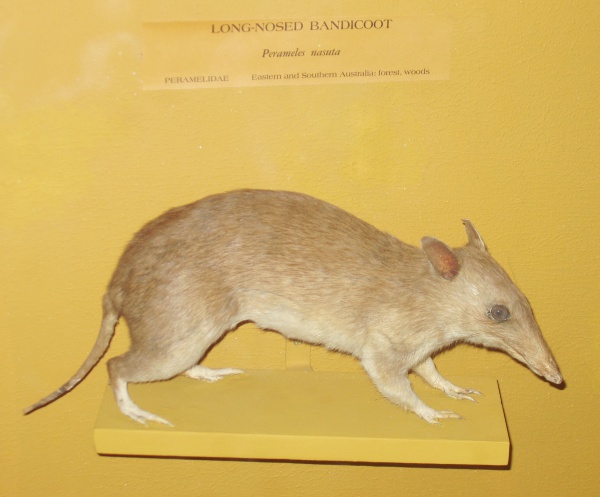Facts About Long-nosed bandicoot
The long-nosed bandicoot is a fascinating creature native to eastern Australia, ranging from northern Queensland down to Victoria. Adorned with a sandy or grey-brown coat and a distinctive elongated snout, this nocturnal omnivore prowls the night, dining on a diverse diet that includes invertebrates, fungi, and plants.
Taxonomists have meticulously described this bandicoot, recognizing two subspecies. It is the largest member of its genus and shares a close relationship with the eastern barred bandicoot. Typically solitary, these bandicoots are distinguished by their small ears, rear-facing pouches, and, most notably, their long noses.
Long-nosed bandicoots inhabit a variety of environments along Australia’s eastern coast, from dense rainforests to open grassy woodlands. They thrive in mixed habitats that offer ample opportunities for foraging and nesting. Although the IUCN Red List classifies them as of "least concern" some local populations, particularly in urban areas like Sydney, have experienced declines. In response, conservation programs, such as those at Taronga Zoo, are actively working to bolster their numbers.
Behaviorally, these bandicoots are solitary, coming together only for mating or parenting. Their feeding habits leave characteristic conical holes in the ground as they dig for insects, plants, and fungi. They are rapid breeders, with a gestation period of just 12.5 days. Post-birth, the young remain in their mother’s pouch for about 50 to 54 days.
In the wild, long-nosed bandicoots face threats from predators such as the red fox and the greater sooty owl. However, they have been successfully bred in captivity since 1964. Given sufficient space, their breeding in captivity is relatively straightforward, which is promising for their conservation prospects.
